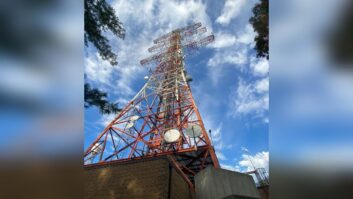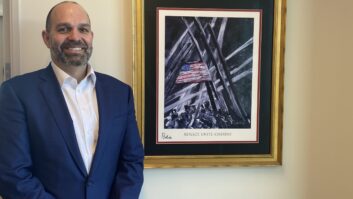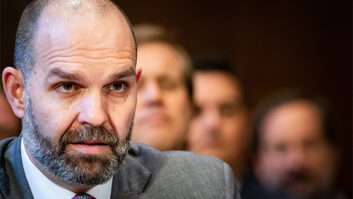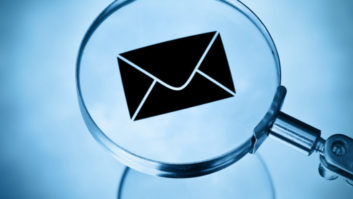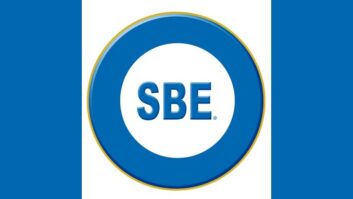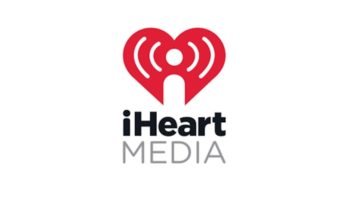The proposed “AM Radio for Every Vehicle Act” in the United States should look to the future and mandate DRM reception, with a timetable for sunsetting non-DRM transmissions.
Allow me to explain why I think this dramatic idea makes sense.
North America has long resisted modernization of broadcast radio to newer all-digital systems. This latest AM legislation is trying to perpetuate a technology that was on the air when the Model T Ford commenced sales. Even FM is almost a century old. Meanwhile the cellphone industry is on its fifth generation.
Terrestrial broadcast radio consists of AM and FM analog systems; the newer pure digital DAB+ and DRM systems; and HD Radio stations, virtually all of which simulcast analog with a surrounding digital signal.
A purely digital signal does not contain analog and works best when the signals around it on the dial are also pure digital. All programs in a license area thus cover the same area, and the sound quality of all programs can be equal.
Digital Audio Broadcasting (DAB) is pure digital broadcasting in the 174–230 MHz band. The improved DAB+ version commenced permanent high-power broadcasting in Australia in 2009. Its technical specification is free to all.
In 2017 Norway was the first country to switch off analog radio on its major networks. The transition was well publicized. In older cars, adapters receive DAB+ signals and convert them to FM. Nearly all listeners had purchased portable radios by the end of that year. As with the switch to digital TV in most countries, the increase in program choice has proven popular with consumers. Nielsen research indicates that Norwegian radio audiences are growing and weekly reach is at 84%. Weekly podcast reach is 39%.
In January of 2025, Switzerland became a DAB+ only radio nation. Swiss radio is largely consumed at home (63% of usage) and most frequently via DAB+ channels. Eighty percent of radio usage is digital. In terms of share, FM is still most frequently used in the car (33%), but here too digital use predominates.
In the U.K., the BBC transmits 11 national programs in the older DAB format, which has an inefficient audio compression system and poor error correction. There are 42 DAB+ as well as 11 DAB commercial stations broadcasting nationally, using a pair of transmitters per site. There are regional and low-power DAB+ stations as well.
RAJAR ratings indicate that analog listening in the U.K. accounts for 27.8% of radio’s consumption. Indeed, streaming radio is neck and neck with analog (with a 27% share). Listening on a DAB+ radio leads the pack; 35.9 million listeners tune in that way, and it accounts for 42.7% of listening.
DAB+ is on the air in eight cities in Australia and in most of Europe (the website of the non-profit WorldDAB Forum has more information). But DAB+ cannot be used in North America because VHF TV occupies the DAB+ tuning range.
Digital Radio Mondiale (DRM) is designed to operate in all existing broadcasting bands but works best in greenfield bands with no analog transmissions, such as the vacated ‘TV low’ (Band 1) TV channels, 47–88 MHz.
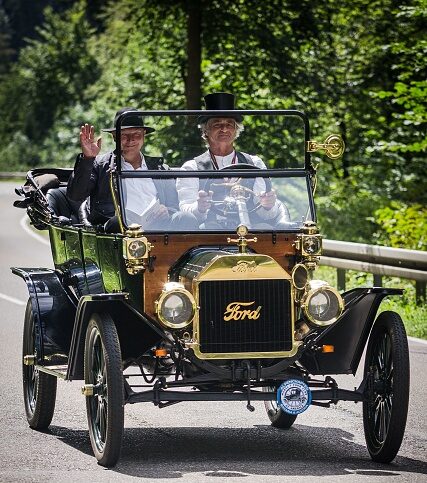
DRM’s technical specification is free to all, though some technologies have current patents.
The not-for-profit association Digital Radio Mondiale (www.DRM.org) has an active branch in India. In 2009 India commenced DRM broadcasts in the high-frequency shortwave band.
The initial approach in India was to cover the country with 37 high-power AM/DRM simulcasts containing an hour of pure digital every weekday. In addition, there are four pure DRM transmitters in the biggest cities running continuously in DRM. Vehicle manufacturers have voluntarily added DRM to nearly all new vehicles at no extra charge. Commercial radio is to be drastically expanded, existing DRM radios can receive the new stations. Their regulator is yet to set the transmission standard.
Phones in India will have the ability to receive DRM built in, and there is a receiving app available to enable it in existing phones.
China has just mandated that all new domestic vehicles, many of which are electric, are to be DRM-equipped with CDR, a modified IBOC system, in the FM band.
India and China each have populations around 1.4 billion, more than four times that of the United States.
In my view, these facts prove that hybrid analog/digital simulcasting has not been a successful way to upgrade broadcasting. If a simulcast is within adjacent transmission channels, the digital signal must be greatly reduced to avoid creating noise in the analog signal. This shrinks digital coverage and makes digital reception unreliable. In addition, less data is available for other services such as slideshows and indexed text.
Upgrade option
Using vertical antenna polarization, Digital Radio Mondiale could be added to Band 1 without interference to or from existing TV or radio.
This chart shows the number of currently available analog channels compared to potential Band 1 DRM digital channels.
| Region | Europe & Africa | The Americas | Asia & Oceania |
| Medium-Frequency band ‘AM’ | 120 # | 118 # | 120 # |
| Band 2 ‘FM’ | 102 | 100 § | 102 |
| Analog Total | 222 | 218 | 222 |
| Band 1 ‘Potential DRM’ | 210 | >296 | 210 |
Some countries use some of the available channels in Band 1 for other purposes.
# Each broadcast uses a half of each adjacent channel, which can cause interference between broadcasters.
§ Each HD Radio broadcast uses a half of each adjacent channel to carry the digital signal. To avoid interference, digital power has to be reduced, shrinking digital coverage.
What are the advantages of this approach for broadcasters?
Like NextGen TV, DRM can transmit on consecutive channels from the same broadcast site, while analog systems cannot.
In addition, pure digital systems can use a single-frequency network, where a main transmitter and blackspot repeaters all broadcast identical programs on an identical frequency. Since three simultaneous audio channels are available, one or two could be allocated to geotargeting. The latitude and longitude of the corners of a target rectangle are specified, and only receivers within that area will switch to that channel for a separate audio program. No translators are required.
Since one signal is fed to all listeners, it is much cheaper than using streaming, which requires a two-way connection between each listener and the broadcaster. The coverage area is a little larger than that of high-power FM; it does not change with the time of day, and there is freedom from disputes about interference with the broadcaster’s own signal and those on adjacent channels.
A single transmitter can carry a station’s multiple programs, all with the same coverage area and sound quality. The coverage area requires one-tenth of FM transmission power, reducing capital and operating costs
An AM carrier is 67–100% of the transmitted power from analog “AM” broadcast or around 90% in pure digital HD AM. It contains no sound or data. Costs can be reduced further by sharing up to six broadcasters with three programs each and some data each on a single transmitter.
AM, FM and HD Radio would continue undisturbed while DRM transmitters and receivers proliferate and the defined date for a pure digital switchover is set.
If pure DRM is added to vehicles — voluntarily or by mandate — presented on the home screen of vehicles. This is what has happened in Europe and India. Drivers could hear the new programs available which may cause them to buy home receivers as well.
As the telecom industry has learned, using free technical standards encourages cheaper equipment thanks to a larger market size. This will also apply to listeners and broadcasters. AM and FM stereo already both use free technical standards and are used worldwide for analog reception.
What are the advantages for vehicle manufacturers?
There is considerably less noise in Band 1 than in the AM broadcast band, even in electric vehicles.
DRM is a worldwide standard with a potential worldwide market, making it attractive to carmakers worldwide, who can install it in all new cars regardless of the destination market. This is what happens currently with analog, and it is what Google, Apple and audio-on-demand companies are trying to do.
DRM’s dynamic ability to allocate data rates is better equipped to provide information during multiple emergencies — information such as police roadblocks, maps showing the danger area and detailed indexed instructions.
To entice consumers to modernize their receivers, they need to be able to hear and see something new and attractive, at an acceptable price. For pure digital radio this means not only clear, stereo, noise-free sound, but also features they get on a phone, such as images and detailed index text, even when cellphones are dead, DRM signals can send targeted emergency announcements to waken people at risk, who can use their car navigation system to escape safely. An animated video of these and other features can be seen at the Digital Radio Mondiale website.
For emergency crews, controlled access can be used to send individuals and groups private messages whilst normal programming continues to everyone else. Coverage is more reliable than that of UHF two-way radios. This can improve emergency response, particularly in rugged terrain. The larger coverage area of broadcast means that the transmitter need not be in the immediate emergency area.
As a foreigner looking into the USA, I see a radio industry that has an overcrowded AM spectrum with poor sound and huge reductions in coverage areas at night. The FM band cannot carry full license-area digital radio and is overcrowded to the point where AM stations cannot transfer to FM. I see the extensive use of directional transmitting antennae to prevent interference instead of optimizing signal strength in the coverage area. Meanwhile in other countries I see the switching off of AM and FM, with an increase in program choice and excellent sound quality on all programs from pure digital radio. I also see a big drop in pollution and operating transmission costs, and the ability to guide vehicle drivers out of danger.
Analog TV in the United States switched off in 2009. The AM bill should look to the future and mandate DRM reception, with a timetable for sunsetting non-DRM transmissions. The time has come.
What else can you do to make the industry great again? Respond to www.fcc.gov/document/fcc-opens-re-delete-delete-delete-docket by the comment deadline of April 11. Request a planned deletion of AM and FM broadcasting, to be replaced by pure Digital Radio Mondiale in Band 1, to save lives in emergencies and lower the cost of transmission for all broadcasters.
